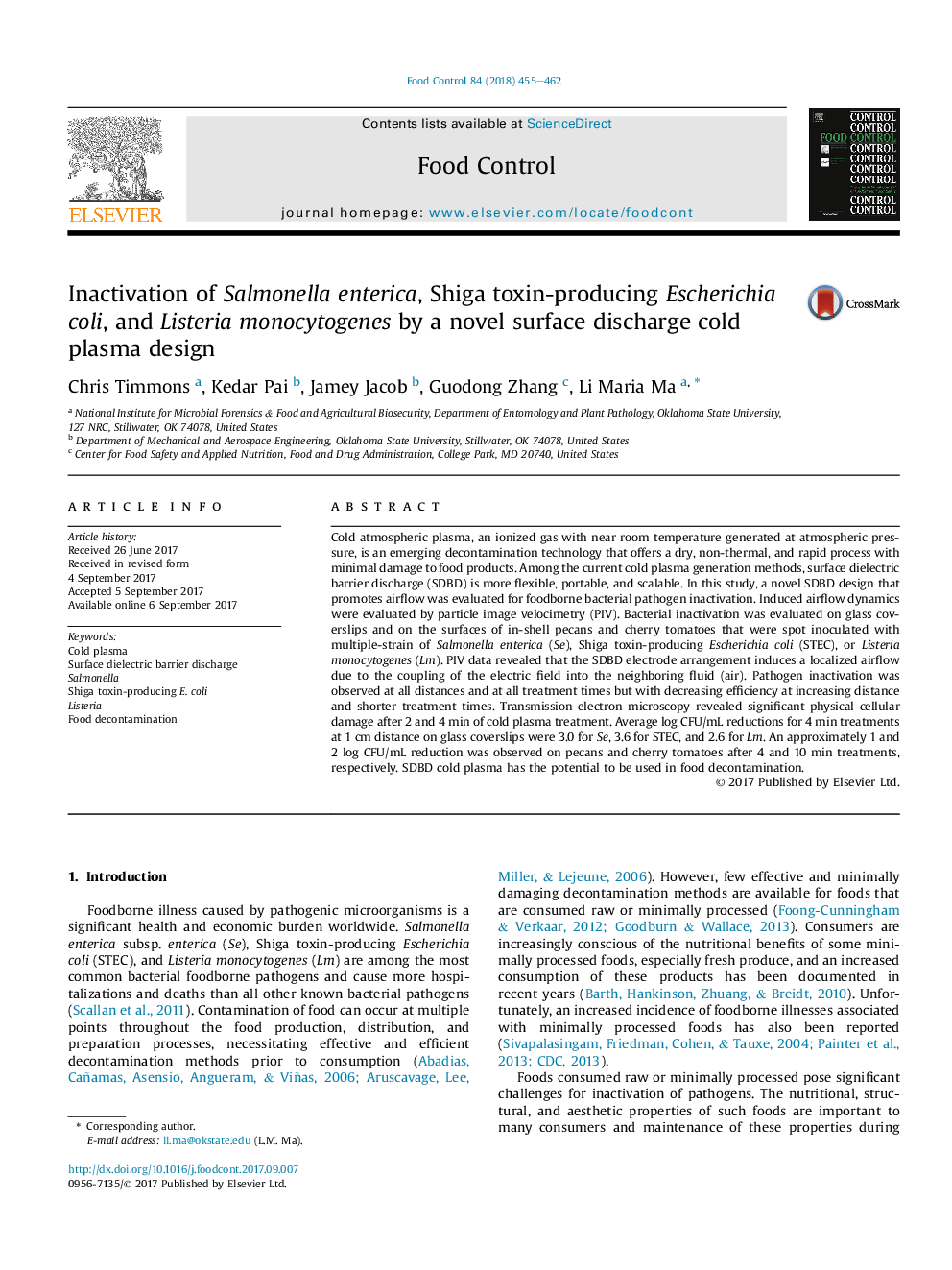| Article ID | Journal | Published Year | Pages | File Type |
|---|---|---|---|---|
| 5767333 | Food Control | 2018 | 8 Pages |
Abstract
Cold atmospheric plasma, an ionized gas with near room temperature generated at atmospheric pressure, is an emerging decontamination technology that offers a dry, non-thermal, and rapid process with minimal damage to food products. Among the current cold plasma generation methods, surface dielectric barrier discharge (SDBD) is more flexible, portable, and scalable. In this study, a novel SDBD design that promotes airflow was evaluated for foodborne bacterial pathogen inactivation. Induced airflow dynamics were evaluated by particle image velocimetry (PIV). Bacterial inactivation was evaluated on glass coverslips and on the surfaces of in-shell pecans and cherry tomatoes that were spot inoculated with multiple-strain of Salmonella enterica (Se), Shiga toxin-producing Escherichia coli (STEC), or Listeria monocytogenes (Lm). PIV data revealed that the SDBD electrode arrangement induces a localized airflow due to the coupling of the electric field into the neighboring fluid (air). Pathogen inactivation was observed at all distances and at all treatment times but with decreasing efficiency at increasing distance and shorter treatment times. Transmission electron microscopy revealed significant physical cellular damage after 2 and 4Â min of cold plasma treatment. Average log CFU/mL reductions for 4Â min treatments at 1Â cm distance on glass coverslips were 3.0 for Se, 3.6 for STEC, and 2.6 for Lm. An approximately 1 and 2 log CFU/mL reduction was observed on pecans and cherry tomatoes after 4 and 10Â min treatments, respectively. SDBD cold plasma has the potential to be used in food decontamination.
Keywords
Related Topics
Life Sciences
Agricultural and Biological Sciences
Food Science
Authors
Chris Timmons, Kedar Pai, Jamey Jacob, Guodong Zhang, Li Maria Ma,
